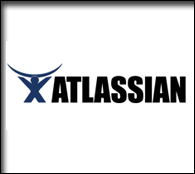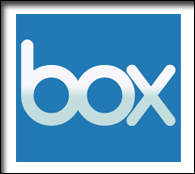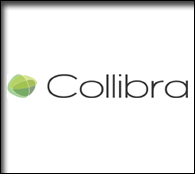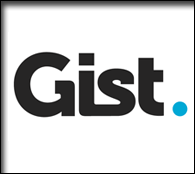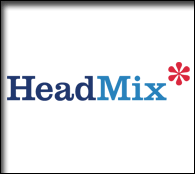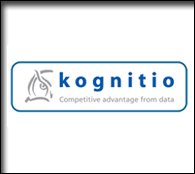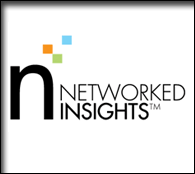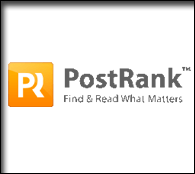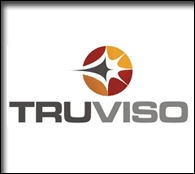general
Friday notes
by Eric Norlin on Jun.19, 2009, under general, speakers, sponsors
I’ve got a couple of notes on a Friday morning, as we start the very early planning for Defrag:
1. I’m overjoyed to announce that Andy Kessler has agreed to be our opening keynote. Andy is, of course, a noted author and frequent contributor to the Op-Ed pages of publications like the Wall Street Journal. You will not want to miss the perspective Andy will bring to the Defrag discussion.
2. You might look at the Defrag homepage and wonder “what’s with that widget?” You know, the one that says “Discover who in your social network is a Defrag attendee.” I’m very happy to be working with EventVue as their alpha customer (alpha alpha - so be kind) around their new “Discover” service. The value proposition of Discover is simple — use it to find out who in your network is a defrag attendee, sign up to be notified when people in your network register for the conference (if you’d like), and receive special discount codes when you use the service. The premise, of course, being that one of the main factors in people’s decision making process around attending is knowing who *else* in their network is coming. We’re just now working on rolling Discover out (and I’m working with the EventVue guys around feedback, design changes, etc) - but I’d love to hear what you think.
3. Lastly, if you’re a sponsor of the recent Semantic Technology Conference or the upcoming Enterprise 2.0 conference, you’re eligible for a discount to sponsor Defrag. Defrag’s obviously a bit of a different animal - since we live at the intersections of a bunch of topics (including those two), and I really hope you’ll give us a look. Email me (enorlin AT mac.com) to find out more.
Cluetrain at 10
by Eric Norlin on Jun.05, 2009, under general
Doc points out that we’re in the midst of the 10 year anniversary of The Cluetrain Manifesto. I can honestly say that Cluetrain changed my life. Here’s how:
When Cluetrain came out, I was a stock-broker living in Denver. I remember sitting at The Park Tavern, reading the book, eating dinner (I devoured the book in one sitting). I’d never read anything like it. In the back of the book were author bios. And one of those bios was for Chris Locke, who, as it turned out, lived in Boulder. Amazingly, it contained his email address. So, I did the only logical thing — emailed him and told him I wanted to buy him a cup of coffee.
Chris was nice enough, and responded to my email by saying that he’d love to, although his schedule was a bit weird. I emailed him several more times trying to set up a meeting - all with no luck. Finally, in a fit of frustration, I sent him an email saying something like - “look, I know you’re a bestselling author and all, but you don’t have to be an asshole — either have coffee with me, or tell me to stop bothering you.” My phone number was in the email’s sig. Two minutes after I sent it, my phone rang. It was an apologetic Chris Locke.
Over the next few months, Chris and I had coffee on a regular basis — talking technology, the internet, Hunter Thompson, music, buddhism — just about everything. Then, one day, Chris told me that he wanted me to work with him on a site - and he thought he could help me make some money doing it (thus began my entrepreneurial life).
The site was personalization.com. The guy paying us was Steve Larsen. The conferences were the personalization summits. The events/meetings/people that came out of working with Chris and Steve include:
1. Met Doc Searls and David Weinberger — still 2 of the smartest people I know.
2. Met Esther Dyson, Clay Shirky, Jerry Michalski, Ann Winblad — and a whole host of Chris and Steve’s “network” (Chris and Steve were part of the original crowd known as “jerry’s kids” that later became PC Forum).
3. Chris called me one day and said, “I just found this new thing that is going to CHANGE THE WORLD.” That thing was Blogger. Back when it was basically run out of Evan Williams’ bedroom. Chris and I ran the personalization.com site off of blogger from there on out (and used to have to email Ev and ask him to reboot the server now and again).
4. Doc intro’d me to Andre Durand, who intro’d me to Phil Becker. Andre started Ping Identity (where I was employee #1), and Andre and Phil asked me to join them on founding and building Digital ID World (DIDW). DIDW was my first real experience running a conference. And it’s still what I do today (obviously).
5. I spent hours in Chris’ kitchen while he reviewed/wrote/ripped apart chapters of Gonzo Marketing.
And countless other things….
I can honestly say that Cluetrain (and interacting with the people around it) changed my life. Not a little. Drastically. And the book was pretty good too! ![]()
To Doc, David, Chris (I’ve never met Rick) — thanks guys! It was always more than just a book, and I think it’s probably inspired an entire generation of tech marketers.
Questhelper for the Enterprise
by Eric Norlin on Jan.08, 2009, under defrag "theory", general
While we’re now hard at work on Glue, (and - yes - you should come) that doesn’t mean that I’ve stopped thinking about Defrag. In fact, a few weeks back, I found myself putting some pieces together between World of Warcraft and Defrag.
For those of you that don’t know, I have a World of Warcraft (WoW) problem. As with most folks that play WoW, there’s a certain level of addiction that sets in over time. I have my friends (and the folks that do web design for Defrag and Glue) to “thank” for getting me into WoW — and it’s now a pretty good bet that I invest (spend, blow?) anywhere between 5 and 25 hours per week online playing my much-beloved warlock, Kalevra.
In any case, in WoW (for those that haven’t played), you can run around doing various things - with one of the main components being “quests.” Quests are basically tasks you have to complete to “level” (level 80 is currently the highest level for a player). The thing about quests is that they can be very time consuming in that you have to find and complete them across various expanses of land (often unexplored), using different tools and things for completion. Quests can be as simple as “kill 10 of these things,” or as complex as a 23 quest story line that eventually leads you into some wonderful state of WoW bliss.
WoW, in all of their goodness, has an open API that lets third party programmers build “add-ons” to bring additional functionality to the game. One of which is Questhelper. Questhelper provides an overlay on the WoW maps that shows you exactly where to go on a quest. Further, it tells you what to do when you get there, AND (most importantly) if you’re running multiple quests (which you always are) moves you through obtaining things in the most efficient manner possible.
All of which got me to wondering: is there any similar tool in the enterprise?
I can imagine a “questhelper” (workflow helper? task helper?) running in an enterprise setting that directs someone working on a specific task on the most efficient route for completion.
I have no idea how this would work, or if this would work, but I can certainly imagine a “questhelper” running on a corporate intranet — directing me to the right tools and people to accomplish what I’m up to in the most efficient manner possible.
Is there anything out there that’s doing this well right now?
Not predictions, or pontifications, but…
by Eric Norlin on Nov.15, 2008, under general, industry stuff
This morning I’m thinking about how weird and wonderful and topsy turvy the next 3-5 years are going to be. I’m thinking about “what if” scenarios. Not predictions. Not pontifications. Not even well-reasoned thought. Just “what if” scenarios…
What if…the Foundry Group, Jeff Clavier, YCombinator, Union Square, TechStars “method” of being a VC became the prominent one, and the big boys (Sequoia, Kleiner Perkins) found themselves with a broken model?
What if…a bunch of tech-saavy VC/entrepreneurial types actually set up a marketplace for the equity of private companies and re-ignited the ability to “exit” (at some level) for startups.?(Kedrosky - if you do this, I wanna work on it.)
What if…the automakers (per Fred Wilson’s suggestion) ended up busted up, not bailed out, and owned largely by private equity firms?
What if…the “enterprise 2.0″ space stumbles upon an innovation in productivity so HUGE that it’s akin to the productivity gains we first saw when email became corporate common-place?
What if…Google lost it’s dominance and Facebook became a failed experiment?
What if…TechCrunch turned out to be a “web 2.0 phenomenon” and shuttered it’s doors?
What if…we stopped seeing incremental gains in tech innovation and saw a true “gap jump?”
What if…oil rose with the recovery, but didn’t go above $80?
What if…Tesla went under, but the Volt was a huge success?
What if…Boulder, Pittsburgh, the Twin Cities, Austin, New York and the Research Triangle replaced Silicon Valley as “the epicenter” of innovation?
What if…Novell and Sun went private (can we please get this done? please?)?
What if…eBay went under, but not before spinning out PayPal in an acqusition to a regional bank?
What if…the only “bank” left standing at the end of this is Wells Fargo and a bunch of decent balance sheet regionals?
What if…hedge fund managers start getting paid on the same time frames as their investors?
What if…all of this “end of the American Empire” talk is silly, and the country emerges from this a nation of fiscally responsible, energized entrepreneurs (and rugged individualists)?
What if…all of this is part of a larger “networking of everything” phenomenon that’s occurring. And the result is a more distributed, intelligence at the edges — everything (national infrastructure, finance, state initiatives, etc)?
What if…Cisco buys Salesforce.com and the Amazon Web Services part of Amazon?
What if…the “new” James Bond movies continue to be as good as Casino Royale?
What if…the long-term demographic “shift” to the southwest and southeast continues and the majority of America resides there by the year 2025? (okay, that wasn’t 3-5 years.)
Yeah, it’ll probably never happen, right? But on the other hand….
Defragging Defrag
by Eric Norlin on Nov.14, 2008, under general
Another Defrag is done, and things turned out very well. I’ve already thanked attendees, sponsors and speakers privately, but let me say this again publicly — THANK YOU — we are quite obviously nothing without all of you. ![]()
That said, I spend around 2 months post-Defrag “pondering” what went right and what went wrong - and then I head into 30-60 days of talking with specific sponsors and speakers prior to picking up the rock and getting to the top of the hill again. One caveat: my brain is still pretty much oatmeal. I’m going to start some rambling “defragging defrag” thoughts, but no one should mistake this for “eric at the top of his game.”
What we did wrong (an ongoing list of suggestions, nit-picks, etc):
1. Power outlets at the tables by the windows: We had power strips in the general session room (as always), but those of you that were there know how popular the “tables by the windows” outside of the rooms were. I got a great suggestion to have power there as well.
2. Session descriptions: I always struggle with this one. Some people would love session descriptions, others like the “open-ended” nature of things. What I’d like to do is find a way for speakers to collaboratively write the descriptions.
3. Un-evenness of content on Day 2: I felt (and heard) that we had some un-evenness of content quality from day 1 to day 2. Noted - and will be fixed. Folks were blaming presenters, etc - but really, the “blame” always falls to me. Don’t get me wrong, some of our most popular speakers were on Day 2 - but I’m striving for perfection here not merely “good enough.”
4. Lack of Open Space: We didn’t have the 90 minute open space this year, and I think we felt the effects. As an organizer, I want to find ways to move people out of their conversational comfort zone (and into surprising situations). We’ll get that done next year.
5. Lots of miscellany: A table not in the right place, a late start on a session, the lack of “protein” at breakfast, a moment that wasn’t orchestrated correctly, a speaker that wasn’t properly prepared. I’ve got a whole bunch of stuff on this list.
6. Digging deeper: We need to find a way to maintain the “high level” talk, while digging deeper into specific topics. Case in point: “social networking” was everywhere this year at Defrag, but I felt like we never managed to get past the cursory discussions. I want to outline the big issues, and then dig into specific areas as needed. It’s a tough balancing act, but one that we’ll work on. I’ve taken to describing this as “tying down our big balloon of thoughts with 2 or 3 ropes” (i.e., not becoming “grounded” but still being tied to the ground).
7. Moving the best to the forefront: There were a some speakers that really needed to be in keynote slots that weren’t. Stowe Boyd, Brian Oberkirch and the boys from Get Satisfaction were cited in the surveys - and I agree.
What we did right:
1. Amazing people: For reasons I don’t completely understand, Defrag draws one amazing group of people. I am always shocked at the sheer energy that is generated in discussions.
2. Some spectacular speakers: As stated above, we had some great speakers. The ones that were called out in surveys included Daniela Barbosa, Stowe Boyd, Brian Oberkirch, Get Satisfaction, Charlene Li and Paul Kedrosky. Bill Duggan (our opener) came out on top as the absolute favorite speaker.
3. Atmosphere: I’m not sure if it shows through or not (I’m way too close to the thing), but Kim and I literally rip our hair out trying to make Defrag’s atmosphere conducive to interactions that blow your mind. We learn something every year, but I received so many great comments about this year that I’m feeling pretty good.
4. Sponsors: People genuinely *liked* interacting with our sponsors this year. Many, many folks cited “visiting the booths” as a highlight for them. Interestingly, those same people tended to comment that our sponsors need to focus on differentiation.
5. The Passport Program: this was just fun. Everyone getting their stamps and looking for prizes. Folks dug it. We’ll do it again next year.
6. BoF dinners: Again, an area we made work this year that didn’t work in year 1. Thanks Get Satisfaction - folks loved it! (My favorite BoF was the “bowling and drinking” BoF.)
7. The “pre-conference” email dinner: Our 25 person experiment really came off well (thanks to Chris Wand and Microsoft). Next year, we’ll be expanding this and finding ways to bring the initial group back together for more discussion later in the defrag experience.
8. Twitter: Okay, one person thought I was too flippant about “everyone using twitter” (hi jennifer!) - and maybe so, but the folks at defrag are certainly not mainstream. Eventvue’s “mega-aggregation” of the feeds was a real plus, and the 1500 tweets generated in 2 days was just cool. (sidenote: kudos to Eventvue for a real step forward in how to effectively implement social networking at conferences.)
9. Press and Analysts: We had some very nice press come out of the show, and I know that folks had time to catch up with analysts old and new as well.
10. New topics surfaced: Next-gen messaging/email, analytics and “crisis informatics” will be getting highlighted in big ways next year. One of the best moments for me was meeting a guy from the Department of Homeland Security that showed up without being registered and just wanted to “see who was there.” The resulting conversation was completely fascinating to me as he highlighted the research they’re doing around “crisis informatics” and how all of this “stuff” is affecting their thinking around crisis response and management. Look for a keynote around this next year.
Bottom Line: running a conference with essentially two people (my incredible wife Kim and myself) is one of the most exhausting, exhilarating, frustrating, wonderful things you can do. We really do bang our heads against the wall for the seven months prior to Defrag, and more than anything, I hope that shows through. I often joke that “all that is good” at Defrag is because of Kim, while “all that is bad” is most likely my fault, but that’s really not as much of a joke as it seems. ![]()
Thanks to all of you that attended Defrag. It feels to me like we’re building one helluva community, and I can’t wait to hang out, clear our heads, and drive innovation forward again next year.
T minus…
by Eric Norlin on Oct.28, 2008, under general
Insert your analogy here — we’re rounding the final bend, etc and galloping to the Defrag finish line.
Registrations continue to roll-in and I’m beyond excited. If you’re thinking of coming, it’s still not too late.
Rounding the turn
by Eric Norlin on Oct.13, 2008, under conference topics, general
We’re “rounding the turn” and heading toward the finish line that is Defrag (in three weeks). If you’re “on the fence” about coming, I want to offer two tidbits of information. First, a quote from Rich Hoeg:
My question to you … have you defragged your brain recently. While this conference may not be perfect for you, please understand that my participation at Defrag is on my own nickel and vacation time. As technologists we have a responsibility to maintain our knowledge. For example, this past Spring I spent most of a weekend at BarCamp Minnesota. I don’t want to imply that my company does not provide me technical training. In fact, next month on my company’s dime I will attend some Sharepoint 2007 training. However, if you want to succeed, you need to invest in yourself. Think of it as an ongoing research and development project. In these tough economic times, you will be glad you did!
I’d add this to Rick’s words — view Defrag as a “safe haven” from all of the recent turmoil. Sure, we’ll still be talking about all of this mess, but I guarantee you’re going to find yourself in a room with a bunch of realists who are grounded and optimistic.
Second bit of info: If you haven’t been to Defrag, I wanted to give you a sense of what you’ll encounter over two (plus) days…
You arrive Sunday evening at Defrag and meander down to the lobby to find the “Chris Wand Next gen email” dinner group that you signed up for. Having found them (and not knowning any of them), you head out for a dinner in Denver.
After an evening of good discussions and food, you wake up having already found 2 or 3 “new friends” and great contacts. You check email (for free, as Defrag bought your in-room internet access), and head down to the registration desk - finding some breakfast and coffee nearby. Your morning fills up with some great talks by folks like Paul Kedrosky, Bill Duggan and Howard Lindzon, and you find yourself thinking about issues you already know in some new ways — and with a strange sense of optimism.
The afternoon sessions come at you like a tsunami - and by the time you head in for Mark Koenig’s day ending keynote, you’re wondering how you’re going to coalesce all of this information in your head. Along the way, you’ve discovered one vendor that made you say “wow” (during the lunch networking), and had a chat with a startup guy that’s not even funded, but was dying to show you what he’s working on.
Thankfully, the day ends with some appetizers and an open bar at the evening reception. By now, you’re feeling like you’re in your element - mixing with the crowd, seeing familiar faces, and getting into some really spectacular discussions. One of those great discussions leads you off to a Birds of a Feather dinner, and you go to bed feeling like maybe - just maybe - Wall Street worries aren’t going to consume your entire consciousness for the next two years.
The morning of day two brings that “man, I’m a bit tired” sense that you always get on day 2 of a conference. You head downstairs to grab coffee and use the conference wifi (which has been the best you’ve ever seen at a tech conference), and settle in at one of the tables in the keynote room to plug-in to a power strip (power outlets - what a concept!). You’re not sure what to expect on Day 2, but you’re ready.
Surprisingly, day 2 proceeds to deepen, broaden and really open up your impressions from day 1. Charlene Li is spectacular. A case study you didn’t even know was coming highlights some amazing stuff, and then - surprise - you actually win a prize from a drawing right before the morning break (a Wii - your kids are gonna love you). The afternoon breakouts don’t let up - and now you’re learning things you’d never even considered before — information tomography (?), stream computing, sousveillance. Yikes.
The day ends and you’re spent - in a really, good, satisfying way. Not only have you learned actionable stuff that will help *tomorrow*, but you’re feeling like your head is above the fog and you’re staring at a clear horizon. The day ends with a keynote about some even newer stuff concerning integration of web apps — it’s a bit more technical that you came expecting, but it reminds you to circle this for next year.
You weren’t able to find a good flight out tuesday night, so you’re planning to collapse in your room with some room service and a pillow. But, as it turns out, a bunch of folks aren’t leaving till tomorrow morning, and it seems like everyone’s heading to the hotel bar for one last discussion.
New friends, great connections, new technologies, amazing ideas — and it all seems to have come with a personal touch.
Yep, Defrag sure seems like it was worth it.
….at least, that’s how I imagine your Defrag experience — and it’s what we get up every morning and work for. I hope you’ll join us.
It’s time to get inspired
by Eric Norlin on Oct.09, 2008, under general, industry stuff
I’ve been sick since Sunday. I hate being sick. My wife will tell you (find her at the Defrag registration desk) - I become the world’s biggest baby when I’m sick. I don’t handle it well.
Things are different this morning, though. I’m waking up absolutely INSPIRED. Here’s what I’m reading:
Howard Lindzon: Too SMALL to Fail (quoting) -
 Here is why panic spreads. Otherwise smart people, who on the surface think they are calm, freak everyone out with their own passive aggressive panic. If you don’t believe me, Sequoia and Uber angel investing guru Ron Conway are just now writing letters to all their CEO’s and giving them advice on how to survive . I mean today?
No offense, but get over yourselves.
If you have a good business, these letters are ridiculous in the timing. Maybe force them to read this letter upon funding and make them memorize it, but at this point, it reeks of panic and fear.
I have been telling any of the CEO’s that will listen to me, to THINK about how we turn this panic into an opportunity. We all have weak investments and weak CEO’s, but a blast email on October 7th is absurd. Anyways, I am poor and they are rich, so that’s that. So while the rest of the world panics, you can panic too, or you can take a few steps back and remember how fortunate you are to be reading this blog, because if you are, you are ‘Too Small to Fail.’ So what do I mean by that?
I can’t fire myself. I am nimble and lean and have a plan. I see this panic and I want to think about the afterbirth of it. Panic’s end. If you are smart and a little lucky, you will survive in good stead and historically, great things happen.
Read that last line 7 times in a row.
I’m also reading Brad Feld: Ok Entrepreneurs, Time to Step Up (quoting) -
My recommendation to all of you entrepreneurs out there is to get off the negative sentiment treadmill, step up, and lead. The people working for your company are likely confused, concerned, and overwhelmed with all the noise in the system.  In the near term, building your business will likely be more challenging on a number of dimensions. So what - that’s the normal cycle of business. You don’t need to be a blind optimist and spout happy talk, but you do need to have a clear sense of purpose and goals for your company. Leadership 101.
I emphasized the “so what” for a reason.
I’m also watching Gary Vaynerchuk. Take 15 minutes and tell me you’re not excited and inspired.
So, here’s the thing - we roll with the punches. Defrag’s topic isn’t changing and our sessions are on point, but my new mission is simple: You WILL leave defrag inspired, optimistic and ready to go make something happen in this downturn. We can all figure this out. Now, not all of the startups will survive, but that’s okay. Let’s get together, work this out, figure out how to land customers *together* and then go make it happen.
And if you’re a “customer” - then you MUST be there. This is your chance to shape, mold, twist and mutilate the next round of products to PERFECTLY SUIT YOUR NEEDS. If you’re not there, telling folks what you want - then it is your fault when you don’t get what you need.
Bottom line: let’s use Defrag to set aside all of this gloom and doom. Let’s *not* turn into the “baby” that I become when I’m sick. Let’s get inspired. Work hard. Work together. And, finally, truly bring some innovation to ground. In some ways, we’re now all paying the price for “web 2.0″ - but the coming days are the days that will really matter.
10 reasons to come to Defrag
by Eric Norlin on Oct.01, 2008, under conference topics, general
Recapping 10 reasons to come to defrag (and, really, there are many more than 10 reasons):
#10: Next-gen email thinking: email’s broken and we’re discussing how to fix it.
#9: Grounded Optimism: Economic realism plus strategy equals grounded optimism.
#8: An Intimate Setting: Tired of expo aisles? Join us.
#7: Learn something you can actually apply: Ask big questions and get some actionable answers.
#6: The People: Defrag’s attendees, speakers and participants are really what it’s all about.
#5: Transparency is the new black: “Collaboration” vendors are about to start pushing “transparency.”
#4:Â The Conversation: No death by PowerPoint. All conversation, all the time.
#3: BoF dinners:Â Birds of a Feather dinners (at the end of day 1) help you to dive more deeply into a specific topic.
#2:Â Great Wifi: No really. A tech conference with great wifi.
#1:Â You: We really do want *you* there.
Make sure to join us.
Reason #1: You.
by Eric Norlin on Sep.30, 2008, under conference topics, general
Reason #1 to come to Defrag: You.
Not “you” in some narcissistic sense; “you” in the, we wanna hear from you and have you contribute to the conversation. And in doing so, you’ll:
A) help your own career
B) help your company’s planning and implementation
C) help move the community’s conversation forward
It’s a triple-win — not something you get to have every day. Join us.
